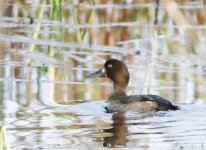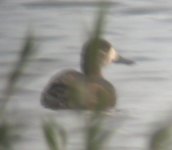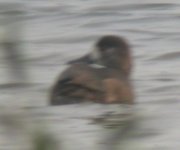Szabo Jozsef
Well-known member
The picture attached was taken in 1st of November here in Romania, and has generated a great deal of discussion on our email forum.
My first impression was that it's a Tufted duck, but a lot of people thought that this is actually a Greater Scaup.
What is your oipinion? and why this bird is, or not, a Tufted duck?
Jozsef
My first impression was that it's a Tufted duck, but a lot of people thought that this is actually a Greater Scaup.
What is your oipinion? and why this bird is, or not, a Tufted duck?
Jozsef








